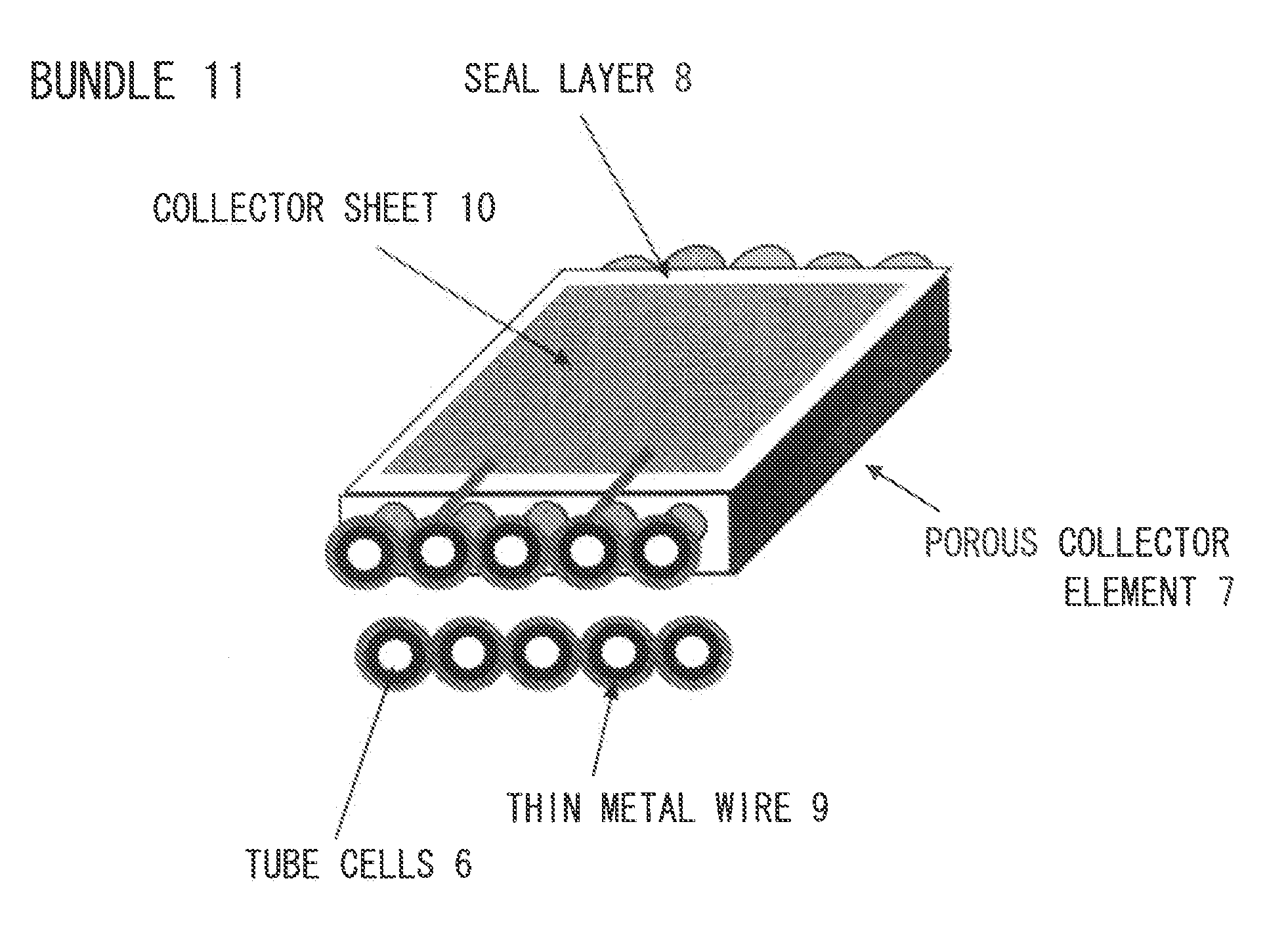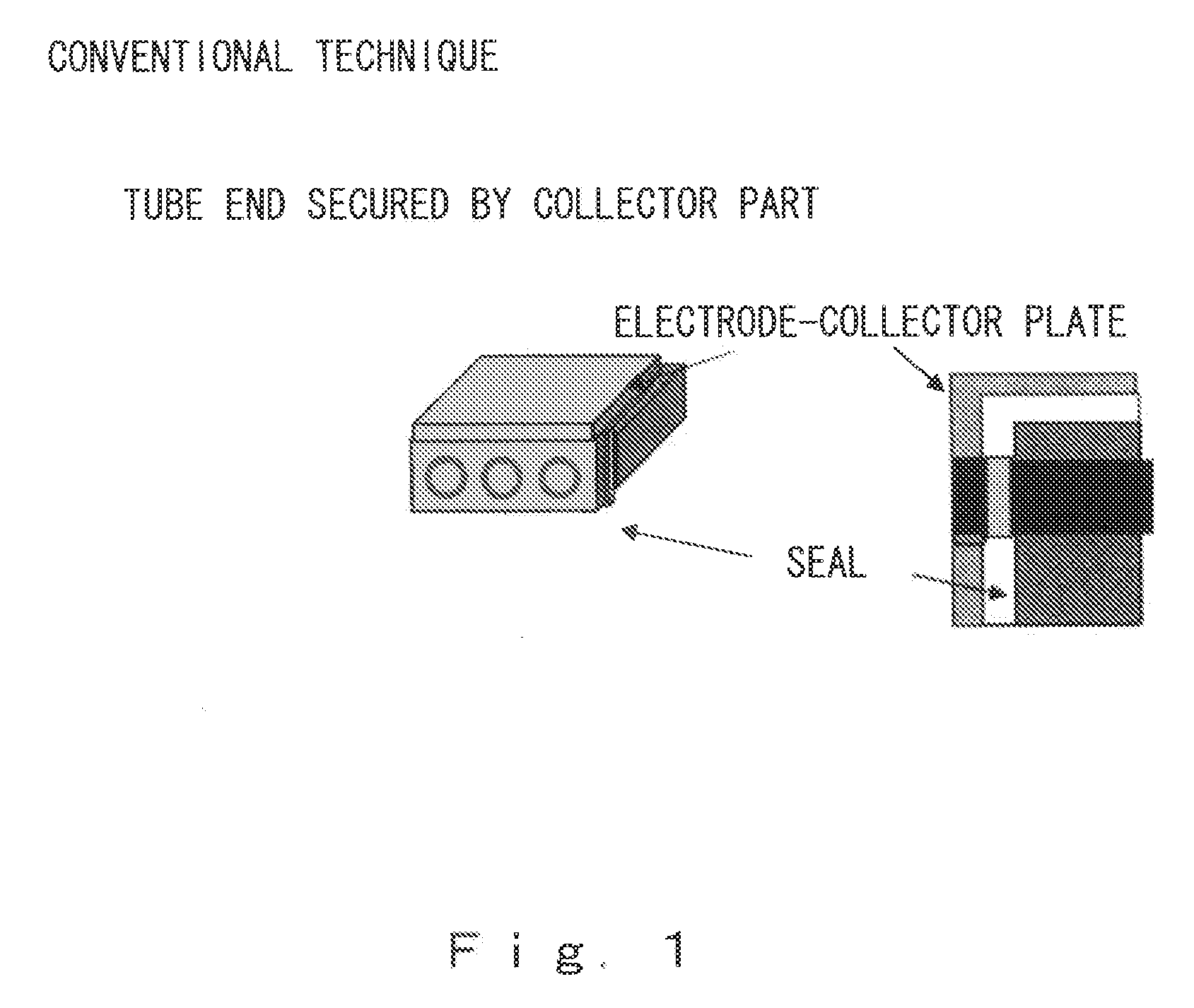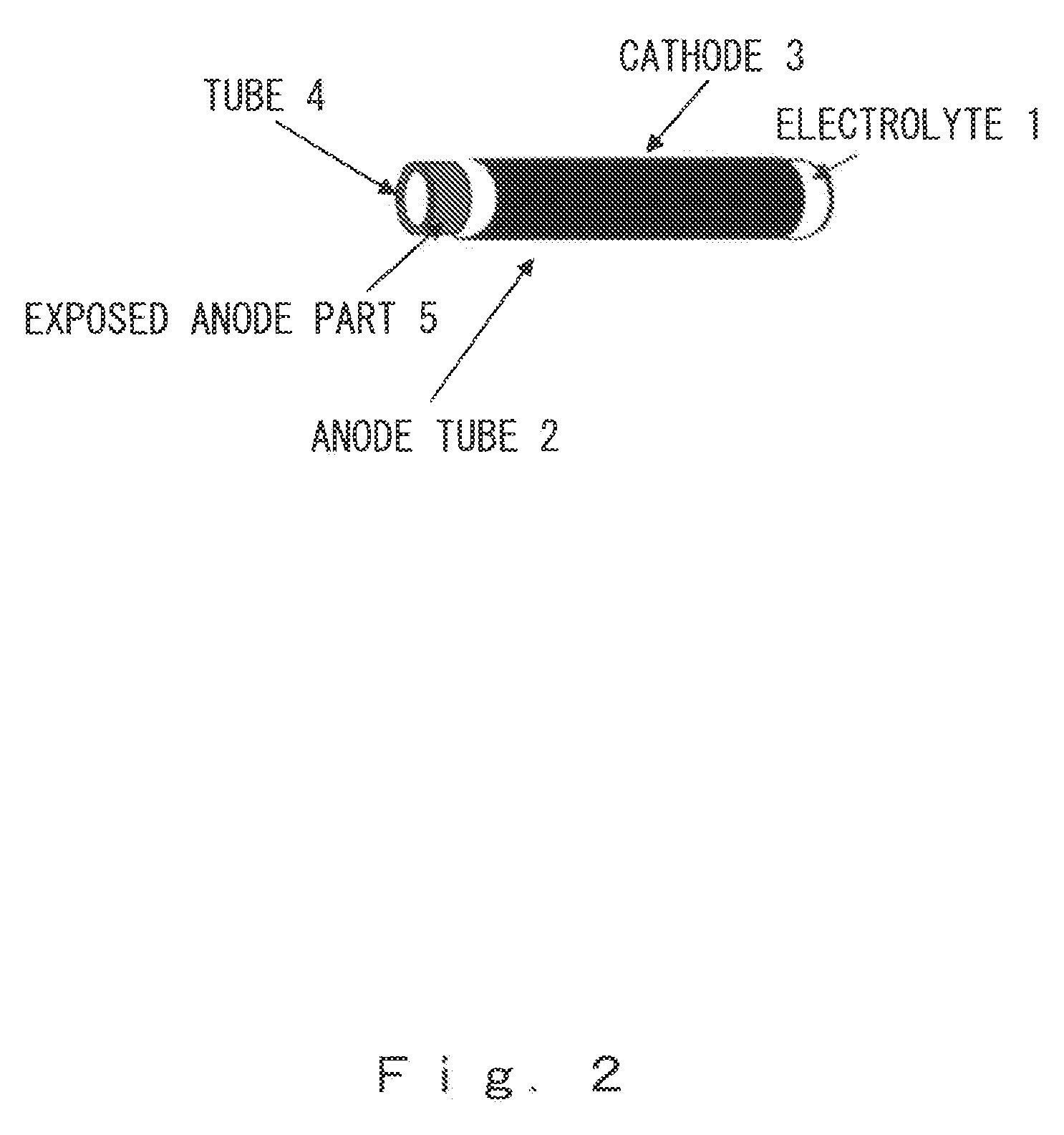Electrochemical reactor bundles, stacks, and electrochemical reactor systems consisting of these components
a technology of electrochemical reactor and stack, applied in the direction of cell components, sustainable manufacturing/processing, final product manufacturing, etc., can solve the problems of large volume change, cell deformation and failure, and the occurrence of cell failure, etc., to achieve efficient collection and easy stacked
- Summary
- Abstract
- Description
- Claims
- Application Information
AI Technical Summary
Benefits of technology
Problems solved by technology
Method used
Image
Examples
example 1
[0085]In this example, a tube electrochemical reactor cell was produced according to the following procedures. FIG. 7 illustrates the appearance of the tubular structure that was made. First, nitrocellulose was added as a binder to NiO (Wako) and a powder having a CeO2-10 mol % Gd2O3 (GDC) composition (Anan Kasei), and the ingredients were kneaded with water into a clayish paste which was then extruded into a tubular molding. The resulting tubular molding had a diameter of 1 mm and a tube thickness of 0.2 mm.
[0086]The opening at one end of the resulting tubular molding was then sealed with vinyl acetate, and the tube was dipped in a slurry containing a solid electrolyte with a GDC composition, thus dip coating an electrolyte layer-forming layer and giving an electrolyte-coated molded tube. 3 mm at the other end of the porous anode tube was left bare, forming the exposed anode part.
[0087]The tubular molding was then dried and then baked for 2 hours at 1400° C., giving an electrolyte-...
example 2
[0090]The tube electrochemical reactor stack obtained in Example 1 was connected to a gas introduction pipe (see FIG. 5). The connections were sealed with ceramic paste, and hydrogen and air were supplied as fuel gas through the fuel manifold 17 and air manifold 18 to the tube electrochemical reactor stack 12. Then, as shown in FIG. 10, the stack temperature and gas outlet temperature were measured with a stack temperature-measuring thermocouple 19 and a waste gas temperature-measuring thermocouple 20. FIG. 11 shows the results at stack temperatures of 400 to 490° C. as the power generating properties of the 4-bundle stack (volume 0.8 cc). It could be demonstrated that a stack no greater than 1 cc was capable of generating power equal to a stack voltage of 3.6 V and a voltage of 2 W or more at a low temperature of no more than 500° C.
example 3
[0091]The tube electrochemical reactor stack obtained in Example 1 was subjected to a rapid start / stop test. The cell performance was measured over time during repeated cycles of 150° C.→400° C. (start time: 3 min) and 400° C.→150° C. (stop time: 10 min) as shown in FIG. 12 (left). The results are given in FIG. 12 (right), indicating a constant output that was virtually unaffected by rapid starts and stops.
[0092]Embodiments of the present invention were explained in detail above, but the present invention is not limited to these embodiments and is capable of various modifications within the scope of the invention. For example, the embodiments above were examples of only single stacks, but structures comprising further building up of stacks can be produced by the same procedures.
[0093]As described above, the present invention relates to tube electrochemical reactor cell bundles and stacks, as well as an electrochemical reactor system composed thereof, whereby the present invention ca...
PUM
| Property | Measurement | Unit |
|---|---|---|
| Temperature | aaaaa | aaaaa |
| Diameter | aaaaa | aaaaa |
| Diameter | aaaaa | aaaaa |
Abstract
Description
Claims
Application Information
 Login to View More
Login to View More - R&D
- Intellectual Property
- Life Sciences
- Materials
- Tech Scout
- Unparalleled Data Quality
- Higher Quality Content
- 60% Fewer Hallucinations
Browse by: Latest US Patents, China's latest patents, Technical Efficacy Thesaurus, Application Domain, Technology Topic, Popular Technical Reports.
© 2025 PatSnap. All rights reserved.Legal|Privacy policy|Modern Slavery Act Transparency Statement|Sitemap|About US| Contact US: help@patsnap.com



